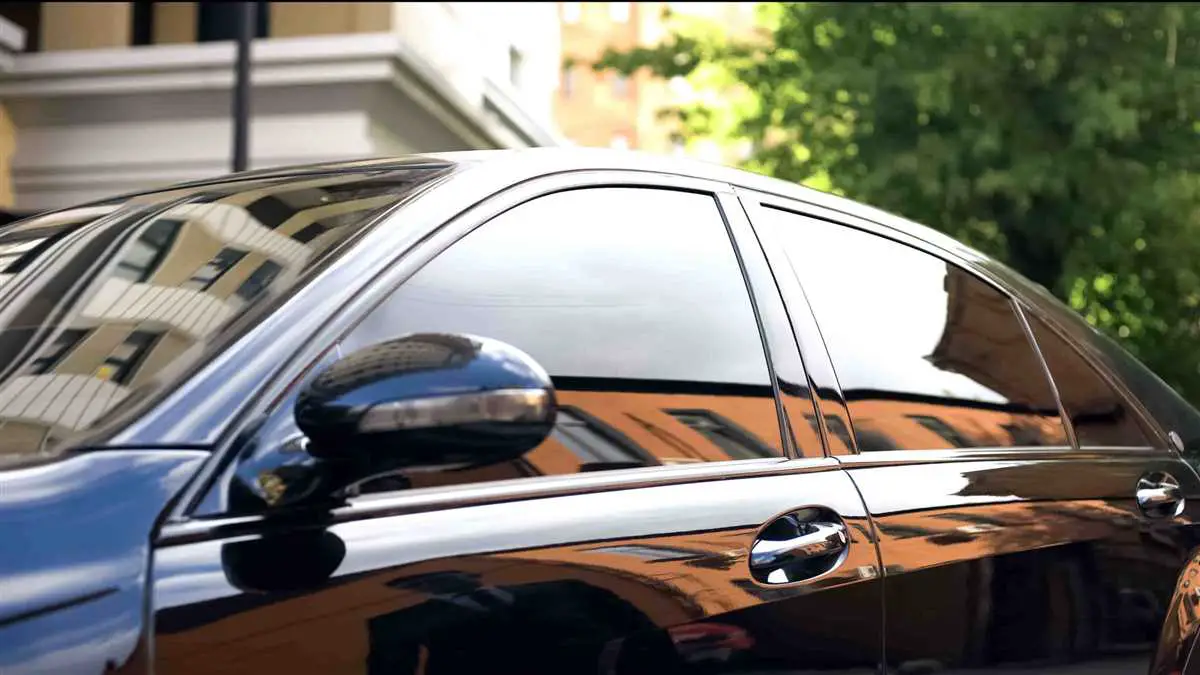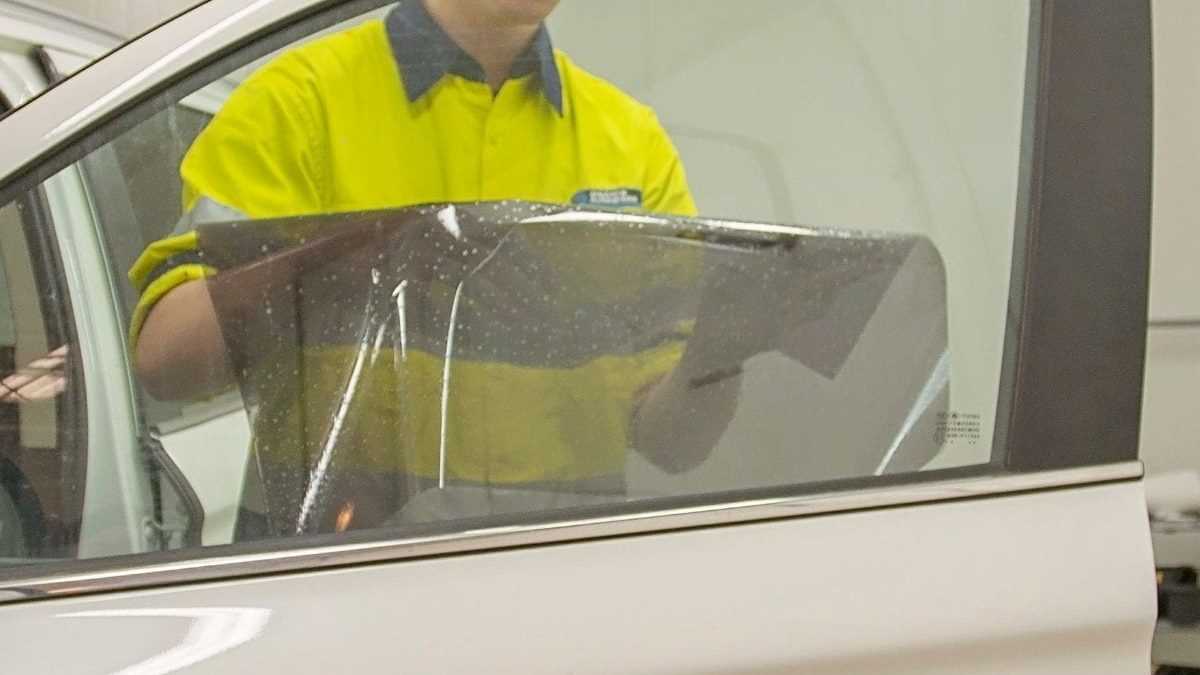Last Updated on February 12, 2024 by Vadym

Tinted windows are a popular modification for cars, providing privacy, reducing glare, and filtering out harmful UV rays. However, when it comes to taking a road test, many people wonder if tinted windows are allowed. The answer to this question may vary depending on where you live and the specific regulations in your area.
In some states and countries, having tinted windows is perfectly legal and you can take your road test without any issues. However, in other places, the rules may be more strict. It’s important to check the laws and regulations of your local Department of Motor Vehicles (DMV) to determine if tinted windows are permitted during a road test.
In general, road tests are conducted to assess a driver’s ability to handle a vehicle safely and follow the rules of the road. Tinted windows can potentially hinder visibility, especially during nighttime or in low-light conditions. Therefore, some DMVs may prohibit the use of tinted windows during a road test to ensure clear and unobstructed vision for both the driver and the examiner.
If tinted windows are not allowed during a road test, you may need to temporarily remove the tint or use a vehicle without tinted windows for the test. This will depend on the specific regulations in your area and the instructions provided by your local DMV. It’s always best to clarify this information beforehand to avoid any potential issues or delays on the day of your road test.
In conclusion, whether or not you can take a road test with tinted windows will depend on the specific regulations in your area. It’s essential to research and consult with your local DMV to understand the rules and requirements for taking a road test. Remember, the main goal of a road test is to ensure the safety of both the driver and other road users, so it’s important to comply with any regulations regarding tinted windows during the test.
Are Tinted Windows Allowed
When it comes to tinted windows, regulations can vary depending on where you are located. While many states and countries have laws that allow a certain degree of window tint, it is important to check the specific regulations in your area.
Tinted windows are popular for a variety of reasons. They can provide privacy, reduce glare, and block harmful UV rays. However, excessively dark tint can be a safety hazard, obstructing visibility for both the driver and other road users.
In general, most jurisdictions have laws limiting the amount of tint on vehicle windows. These laws typically specify the maximum level of tint allowed on different windows, such as the front windshield, front side windows, and rear windows. The level of tint is usually measured by the percentage of light that is able to pass through the windows.
For example, some states may allow a higher level of tint on the rear windows compared to the front side windows. This is because rear windows are less critical for driver visibility. Additionally, certain vehicles, such as police cars or limousines, may be exempt from tint regulations due to their specific purposes.
To ensure compliance with tint regulations, it is recommended to have your windows professionally tinted. Professionals will have knowledge of local laws and can ensure that your windows are within the legal limits. Additionally, they can help you choose the right level of tint to meet your needs while still being in compliance with the law.
If you are planning to take a road test, it is especially important to check the regulations regarding tinted windows. Some jurisdictions may require you to temporarily remove or adjust the window tint before taking the test. This is to ensure that the examiner has clear visibility both inside and outside the vehicle during the test.
In conclusion, while tinted windows can offer various benefits, it is essential to be aware of the regulations in your area. Checking the legal limits and having your windows professionally tinted can help ensure that you are compliant and maintain safe visibility on the road.
| Window | Allowable Tint Percentage |
|---|---|
| Front Windshield | Varies by jurisdiction, usually limited to a strip at the top |
| Front Side Windows | Varies by jurisdiction, typically between 35% to 70% |
| Rear Windows | Varies by jurisdiction, typically between 20% to 70% |
Learn about the rules and regulations for tinted windows during a road test
When preparing for a road test, it is important to familiarize yourself with the rules and regulations regarding tinted windows. Tinted windows can significantly affect visibility, especially during low light conditions, and it is essential to understand the restrictions set by the local authorities.
The exact regulations for tinted windows vary from state to state and country to country, so it is crucial to research the specific laws in your area. Generally, there are limitations on the darkness of window tints, the positioning of the tint, and the type of tint material that can be used.
During a road test, it is essential to ensure that your vehicle is in compliance with these regulations. Excessive tint on windows can obstruct the visibility of the driver and other road users, leading to potential safety hazards. In some jurisdictions, vehicles with illegal window tints can result in a failed road test.
To avoid any issues during your road test, consider the following guidelines:
- Check the local regulations: Research and familiarize yourself with the specific regulations regarding tinted windows in your area.
- Measure the tint darkness: Use a window tint meter to measure the darkness of your tint. Ensure that it falls within the permissible limits set by the authorities.
- Inspect the tint positioning: Make sure that the tint is applied in the allowable areas of the windows. Some jurisdictions specify that only the top portion of the windshield can be tinted.
- Choose an approved tint material: If your jurisdiction specifies the type of tint material that is permitted, ensure that your vehicle complies with these requirements.
- Remove excessive tint: If your vehicle has excessively dark window tints, consider removing them before the road test to avoid any issues or possible rejections.
- Consult with a professional: If you are unsure about the legality of your window tints, seek advice from a professional tinting service or your local Department of Motor Vehicles.
By following these guidelines and adhering to the rules and regulations regarding tinted windows, you can ensure a smooth road test experience without any complications related to window tints.
How Tinted Windows Affect Visibility
Tinted windows can have a significant impact on visibility while driving, especially during certain weather conditions or at night. While tinted windows may offer various benefits, such as reducing glare and keeping the interior of the car cooler, they can also create potential safety hazards if they impair the driver’s vision.
One of the main concerns with tinted windows is reduced visibility, particularly in low-light situations. The dark tint can make it more challenging to see objects, pedestrians, and other vehicles on the road. This can be especially dangerous at dusk or dawn when natural lighting conditions are already diminished.
Another issue with tinted windows is that they can affect the driver’s peripheral vision. The dark film can restrict the field of view, making it harder to notice hazards approaching from the sides. This can be critical when changing lanes or maneuvering through busy intersections.
Tinted windows may also obstruct the driver’s view of traffic signals, stop signs, and road signs. The reduced contrast caused by the tint can make it difficult to distinguish important signage, putting both the driver and other road users at risk.
It’s important to note that each state has its own regulations regarding window tinting and visibility. Some states prohibit or limit the darkness of window tints on certain windows, such as the windshield and front side windows, to ensure adequate visibility for the driver.
Prior to taking a road test, it’s crucial to check your state’s specific regulations regarding window tinting. If the tinted windows are within legal limits and do not impede visibility, you may be allowed to take the road test. However, if the tint is too dark or obstructs your vision, it may be necessary to remove or replace the tint before the test.
| Effects of Tinted Windows on Visibility | Potential Hazards |
|---|---|
| Reduced visibility during low-light conditions | Inability to see objects, pedestrians, and vehicles on the road |
| Restriction of peripheral vision | Difficulty noticing hazards from the sides |
| Obstruction of traffic and road signs | Difficulty distinguishing important signage |
Understanding the impact of tinted windows on driver visibility
Tinted windows, which are commonly seen on many vehicles, can provide drivers with a range of benefits, such as increased privacy, reduced glare, and protection from harmful UV rays. However, it is important to consider the potential impact that tinted windows can have on driver visibility.
The level of tint applied to windows can vary, with some vehicles having darker tints than others. While tinted windows can help to reduce glare and improve visual comfort, they can also significantly decrease the overall visibility from inside the vehicle, particularly during low-light conditions or at night.
When windows are tinted, the amount of natural light passing through the glass is reduced, which can make it difficult for drivers to see clearly. This can be particularly problematic when trying to navigate tight spaces, such as parking lots or when changing lanes on a busy road. Reduced visibility can also make it harder to see pedestrians, cyclists, or other vehicles on the road, increasing the risk of accidents or collisions.
To ensure the safety of both the driver and others on the road, it is important to strike a balance between the advantages of tinted windows and the need for sufficient visibility. Different jurisdictions have specific regulations regarding window tinting, dictating the maximum allowable tint levels for different windows on a vehicle.
It is recommended that drivers familiarize themselves with the local laws regarding tinted windows to ensure they comply with the regulations. Additionally, it may be wise to consult with a professional window tinting service to understand the different tint options available and select a level of tint that maintains adequate visibility while still providing the desired benefits.
| Pros of tinted windows | Cons of tinted windows |
|---|---|
| Increased privacy | Decreased overall visibility |
| Reduced glare | Difficulty navigating in low-light conditions |
| Protection from UV rays | Reduced ability to see pedestrians, cyclists, or other vehicles |
Tinted Windows and Road Safety
Tinted windows can give a vehicle a sleek and stylish appearance, but it’s important to consider how they might impact road safety. While tinted windows can provide privacy and reduce glare from the sun, they can also affect visibility for both drivers and pedestrians.
One of the main concerns with tinted windows is that they can reduce the amount of light coming into the vehicle. This can make it harder for drivers to see clearly, especially at night or in poor weather conditions. Reduced visibility can lead to delayed reactions and increased risk of accidents.
It’s also worth noting that the degree of tint allowed by law varies depending on the jurisdiction. Some regions have strict regulations on tinted windows, while others may allow darker tints. It’s important for drivers to familiarize themselves with local laws and regulations to ensure they are in compliance.
While tinted windows can provide some benefits, it’s important to prioritize safety on the road. Drivers should consider the potential impact that tinted windows can have on their visibility and take necessary precautions. This may include opting for lighter tints or avoiding them altogether, especially if they regularly drive in low-light conditions.
Ultimately, the decision to have tinted windows is a personal one, but it’s important to weigh the potential risks and benefits. Safety should always be the top priority for both drivers and pedestrians on the road.
Exploring the potential safety issues with tinted windows during a road test

When it comes to taking a road test, it is important to ensure that your vehicle is in compliance with all the necessary safety regulations. One such regulation that often raises questions is the use of tinted windows.
Tinted windows can offer various benefits, such as reducing glare from the sun and enhancing privacy. However, they can also pose potential safety concerns, especially during a road test.
- Decreased visibility: Tinted windows can significantly reduce visibility, both during the day and at night. This can make it difficult for the driver to see pedestrians, cyclists, or other vehicles on the road, increasing the risk of accidents.
- Impaired communication: Clear communication between the driver and the examiner is crucial during a road test. Tinted windows can make it hard for the examiner to effectively observe the driver’s actions or provide instructions, leading to potential misunderstandings and compromised safety.
- Obstructed emergency responders: In case of an emergency situation, tinted windows can hinder the ability of emergency responders to see inside the vehicle and provide assistance, potentially delaying critical aid.
- Legal requirements: Each jurisdiction has its own regulations regarding the maximum allowed level of window tint. If your vehicle’s tint exceeds the legal limit, you may be subject to penalties, and potentially even fail your road test.
Considering these potential safety issues, it is strongly advised to have your vehicle’s windows comply with legal requirements and refrain from using heavily tinted windows during a road test. Ensuring optimal visibility for yourself, other road users, and the examiner is paramount to promoting overall safety on the road.
Legal Limits for Tinted Windows
When it comes to tinted windows, there are legal limits that must be adhered to. These limits vary from country to country and even from state to state within a country. It is important to understand these limits before getting your car windows tinted to ensure you are in compliance with the law.
Tinted windows serve a variety of purposes, including reducing glare from the sun, increasing privacy, and protecting the interior of the car from harmful UV rays. However, if the tint is too dark, it can obstruct the driver’s view and increase the risk of accidents. Therefore, governments have established regulations to restrict the level of tint that is allowed on car windows.
In many countries, including the United States, the legal limit for tinted windows is expressed as a percentage of visible light transmission (VLT). VLT refers to the amount of light that is allowed to pass through the windows. For instance, a 50% VLT means that only 50% of the light is able to pass through the window, while the other 50% is blocked by the tint.
The legal limits for tinted windows typically vary depending on the specific windows of the car. For example, the front windshield is often required to have a higher VLT compared to the side and rear windows. This is to ensure proper visibility for the driver, especially during nighttime driving.
If you are planning to get your car windows tinted, it is essential to research and understand the legal limits in your area. Failure to comply with these regulations could result in fines, penalties, or even having to remove the tint from your windows altogether.
It is also worth noting that the rules and regulations regarding tinted windows may change over time. Therefore, it is important to stay informed and regularly check for any updates in order to remain in compliance with the law.
Find out the legal limits for tinted windows in your area
If you are considering getting your windows tinted before taking your road test, it is important to familiarize yourself with the legal limits for tinted windows in your specific area. Tinted windows are subject to regulations and restrictions that vary from state to state or from country to country. These limits are typically in place to ensure safety, visibility, and reduce the risk of accidents on the road.
One way to find out the legal limits for tinted windows is to consult your local Department of Motor Vehicles (DMV) or the equivalent authority in your area. They will provide you with accurate and up-to-date information regarding the regulations governing window tinting. It is essential to comply with these regulations to avoid penalties or potential problems during your road test.
Additionally, you can also research online or consult local law enforcement agencies to find information regarding tinted window laws in your area. Many states or countries have websites or publications that outline the specific guidelines for window tinting, including allowable percentages of tint, placement restrictions, and any exceptions or exemptions that may apply.
Remember that even if tinted windows are legal in your area, there may still be restrictions on the level of tint allowed. These limits are typically expressed as a percentage of the visible light transmission (VLT), referring to the amount of light that can pass through the window. Make sure you understand these limits and comply with them when getting your windows tinted prior to your road test.
In conclusion, it is crucial to know and adhere to the legal limits for tinted windows in your area before taking your road test. Familiarize yourself with the regulations set by your local DMV or equivalent authority, research online, or consult local law enforcement agencies to find accurate information regarding tinted window laws. By doing so, you can ensure compliance with the regulations, avoid penalties, and have a smooth road test experience.
